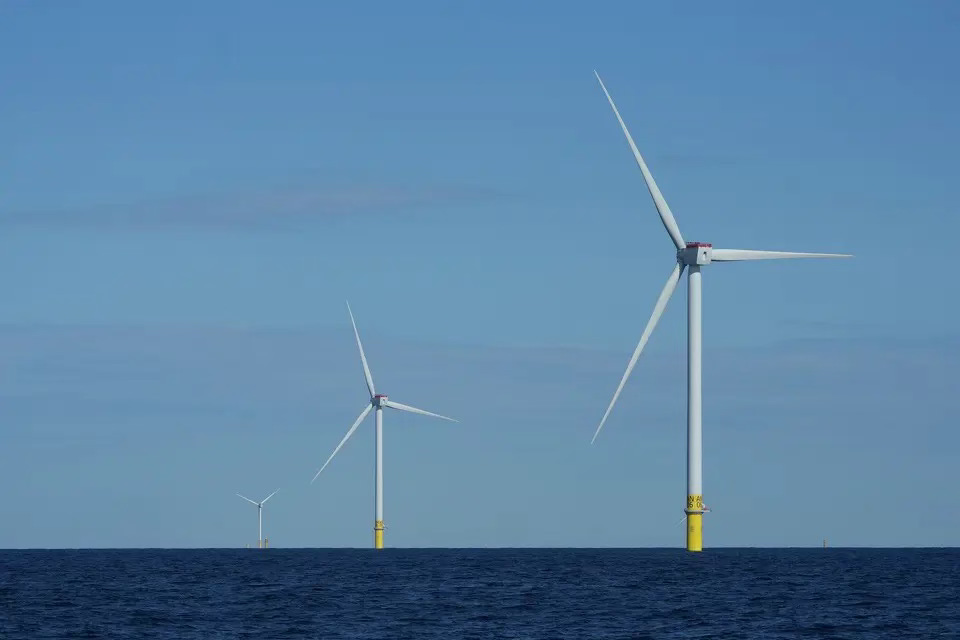AI Needs Power, Not Politics
Artificial intelligence isn’t just a software story anymore. It’s a hardware and electricity story. Every large-scale AI model, like ChatGPT. depends on data centers whose energy demands rival heavy industry. Training a frontier system can draw as much power as a small city for weeks on end. And as these models move from training to answering billions of queries daily, their footprint multiplies.

Industry leaders have already begun sounding the alarm. Sam Altman calls energy “the limiting factor” for AI. According to one estimate, data center demand is expected to increase five-fold by 2035. The United States has the resources to meet this challenge, but only if it aligns energy policy with technological ambition.
Right now, it’s doing the opposite.
The administration has canceled offshore wind permits on parts of the continental shelf for projects already in the planning and construction stage. Republicans in Congress and statehouses are moving to strip incentives for wind and solar, and have even suggested penalizing utilities for building them. These attacks on renewables are more than political theater. They are strategic mistakes that undercut U.S. competitiveness at the exact moment when AI is becoming the backbone of economic and security power.
Data centers don’t run on ideology. They run on electrons.
Wind and solar are not just climate projects; they are the cheapest, fastest-to-deploy sources of new generation capacity in the 2020s. They can be sourced off-the-shelf, scaled quickly and located close to demand. Battery technology already solves challenges with intermittancy. Killing them off means doubling down on coal and gas—technologies that bring their own problems.
It is also in violation of the traditional conservative free-market ethos. Yes, the solar and wind industries were nurtured with generous subsidies and tax incentives. But that is done, and now these forms of energy are not only the cheapest in most markets, they are being rapidly deployed. The International Energy Agency estimates that 33% of global energy generation will be renewables (wind, solar, hydropower) by the end of next year.
Coal’s share will fall to 32% of global generation. Natural gas, while more flexible than coal, is still volatile. Prices spike with global events, as Europe learned after Russia’s invasion of Ukraine. Building new gas plants takes years, even while demand from data centers is spiking right now. locks in decades of carbon emissions and infrastructure that could become stranded assets. It is not a serious long-term answer.
Nuclear fission, meanwhile, provides reliable baseload power and must remain part of the mix. But it faces long lead times, cost overruns, waste disposal challenges, and outdated regulatory frameworks that slow deployment to a crawl. It should be part of a long-term energy strategy, but won’t address load growth in the short term.
Investor confidence is already shaky. Hundreds of billions in private capital are waiting to be deployed into renewables and storage, but policy whiplash at both federal and state levels makes long-term planning impossible. Every time a subsidy is repealed or a permit revoked, it sends a message: America is not serious about building.
The irony is that the U.S. is also leading the charge on nuclear fusion—the “kill shot” for the energy question. Recent breakthroughs at facilities in Europe and China suggest fusion is no longer fantasy. Fusion promises virtually limitless, carbon-free baseload power.
But fusion isn’t ready today. Commercial reactors are, at best, a decade or two away. Until then, the only scalable bridge technologies are renewables, paired with nuclear fission and storage. Wind and solar are the workhorses that can meet demand now while buying time for fusion to mature.
Undermining them is like starving the patient while waiting for the miracle cure.
The paradox is clear: America’s future in AI depends on abundant and cheap electricity that can be scaled today. Wind and solar are already delivering that. Fusion may deliver it tomorrow. But if politics strangles renewables in the present, the U.S. risks falling behind in both the AI and energy race.


